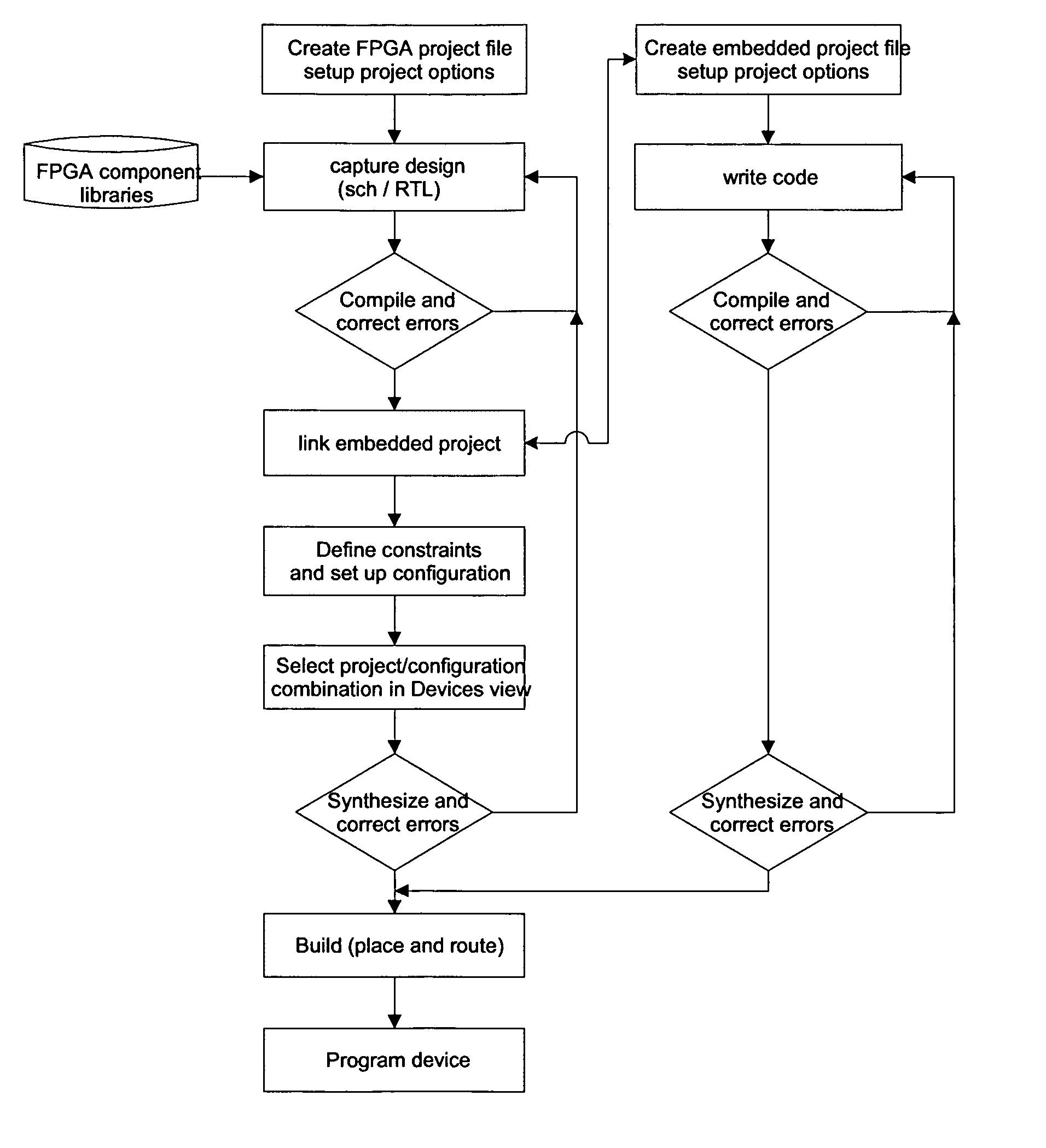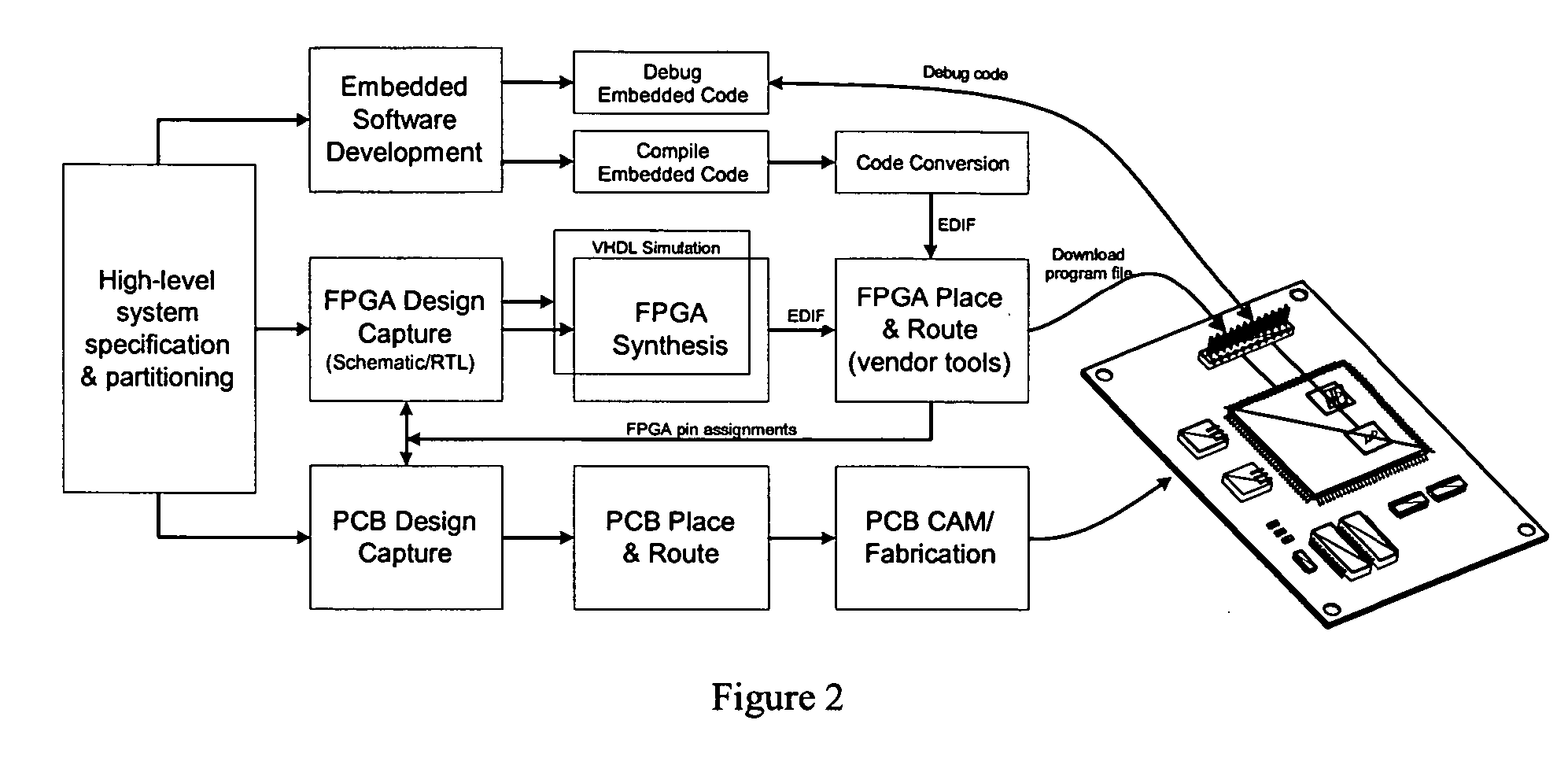System for designing re-programmable digital hardware platforms
a technology of reprogrammable digital hardware and platform, applied in the field of system and method for designing digital circuit, can solve the problems of inability to substitute programmable devices for non-programmable design approaches, inability to replace programmable devices, and inability to meet the needs of programmable devices,
- Summary
- Abstract
- Description
- Claims
- Application Information
AI Technical Summary
Benefits of technology
Problems solved by technology
Method used
Image
Examples
example 1
Record=Constraint|TargetKind=Part|TargetId=XC2S300E-6PQ208C
[0175] This constraint targets the part (or FPGA component), in this case specifying the type as XC2S300E-6PQ208C. Note that this device must be supported by selecting the Design>>Add / Modify Constraint>>Part menu item to display the Choose Physical Device dialog. This dialog displays all devices supported by the re-programmable digital platform design system 10. This constraint group should only appear once in any configuration.
example 2
Record=Constraint|TargetKind=Port|TargetId=VGA_VSYN|FPGA_PINNUM=P134
[0176] This constraint group targets the net connected to port VGA_VSYN, specifying that it is connected to FPGA pin number P134.
example 3
Record=Constraint|TargetKind=Port|TargetId=LCD_E|FPGA_PINNUM=P82|FPGA_IOSTANDARD=LVTTL33|FPGA_SLEW=SLOW|FPGA_DRIVE=12 mA
[0177] This constraint group targets the net connected to the port LCD_E, specifying that it is connected to FPGA pin number P82, have an I / O standard of LVTTL33, a slew setting of slow, and a drive current of 12 mA.
PUM
 Login to View More
Login to View More Abstract
Description
Claims
Application Information
 Login to View More
Login to View More - R&D
- Intellectual Property
- Life Sciences
- Materials
- Tech Scout
- Unparalleled Data Quality
- Higher Quality Content
- 60% Fewer Hallucinations
Browse by: Latest US Patents, China's latest patents, Technical Efficacy Thesaurus, Application Domain, Technology Topic, Popular Technical Reports.
© 2025 PatSnap. All rights reserved.Legal|Privacy policy|Modern Slavery Act Transparency Statement|Sitemap|About US| Contact US: help@patsnap.com



